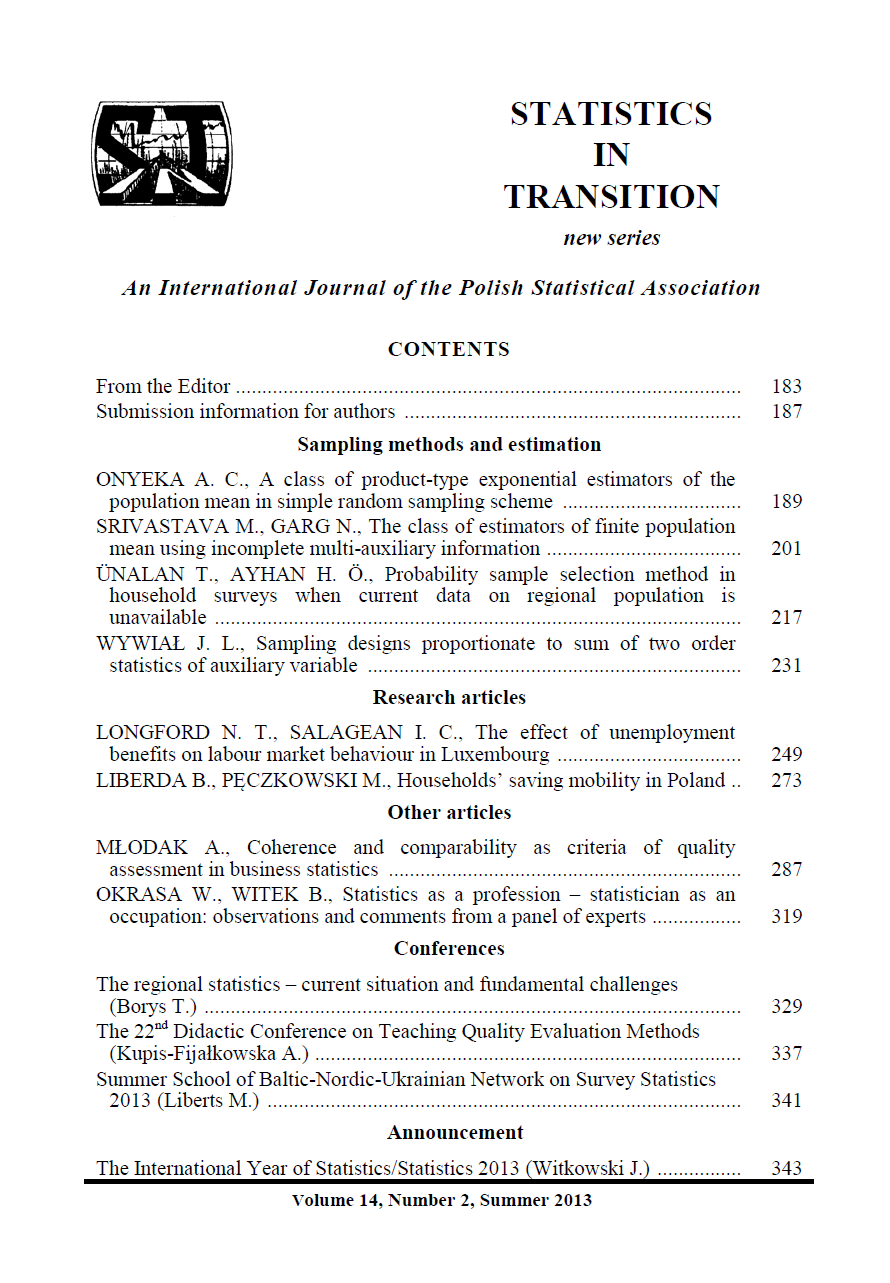ARTICLE
ABSTRACT
We apply the potential outcomes framework to estimate the effect of awarding unemployment benefits on gaining long-term employment after an unemployment spell and on the time it takes to achieve it. We conclude that such awards, regarded as a treatment, are associated with poorer labour force outcomes than no awards
KEYWORDS
administrative register, labour market, propensity matching, unemployment spells
REFERENCES
ABADIE, A., IMBENS, G., (2006). Large sample properties of matching estimators for average treatment effects. Econometrica 74, 235–267.
CARD, D., LEVINE, P. B., (2000). Extended benefits and the duration of UI spells: evidence from the New Jersey extended benefit program. Journal of Public Economics 78, 107–138.
CARLING, K., HOLMLUND, B., VEJSIU, A., (2001). Do benefit cuts boost job finding? Swedish evidence from the 1990s. Economic Journal, 111, 766–790.
CRUMP, R.K., HOTZ, V. J., IMBENS, G. W., MITNIK, O. A., (2009). Dealing with limited overlap in estimation of average treatment effects. Biometrika 96, 187–199.
HIRANO, K., IMBENS, G., RIDDER, G., (2003). Efficient estimation of average treatment effects using the estimated propensity score. Econometrica 71, 1161–1189.
HOLLAND, P. W., (1986). Statistics and causal inference. Journal of the American Statistical Association 81, 945–970.
HUNT, J., (1995). The effect of unemployment compensation on unemployment duration in Germany. Journal of Labor Economics 13, 88–120.
LALIVE, R., ZWEIMÜLLER, J., (2004). Benefit entitlement and unemployment duration: The role of policy endogeneity. Journal of Public Economics 88, 2587–2616.
LALIVE, R., VAN OURS, J., ZWEIMÜLLER, J., (2006). How changes in financial incentives affect the duration of unemployment. Review of Economic Studies 73, 1009–1038.
LECHNER, M., (2002). Some practical issues in the evaluation of heterogeneous labour market programmes by matching methods. Journal of the Royal Statistical Society Series A 165, 59–82.
LONGFORD, N. T., NICODEMO, C., NÚNEZ, M., NÚNEZ, E., (2011). Well being and obesity of rheumatoid arthritis patients. Health Services and Outcomes Research Methodology 11, 27–43.
ROED, K., ZHANG, T., (2003). Does unemployment compensation affect unemployment duration? Economic Journal 113, 190–206.
ROSENBAUM, P. R., (2002). Observational Studies, 2nd ed. Springer-Verlag, New York.
ROSENBAUM, P. R., RUBIN, D. B., (1983). On the central role of the propensity score in matching. Biometrika 70, 41–55.
RUBIN, D. B., (1974). Estimating causal effects of treatments in randomized and nonrandomized studies. Journal of Educational Psychology 66, 688–701.
RUBIN, D. B., (2002). Multiple Imputation for Nonresponse in Surveys. Wiley and Sons, New York.
RUBIN, D. B., (2006). Matched Sampling for Causal Effects. Wiley and Sons, New York.
RUBIN, D. B., THOMAS, N., (1996). Matching using estimated propensity scores: Relating theory to practice. Biometrics 52, 249–264.
UUSITALO, R., VERHO, J., (2010). The effect of unemployment benefits on re employment rates: Evidence from the Finnish unemployment insurance reform. Labour Economics 17, 643–654
